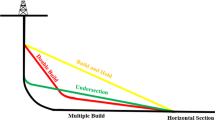Abstract
Operation of existing flood control facilities is one the efficient method for urban stormwater management. In order to quantitatively manage urban floods, operational policies of facilities should be adapted, before need to the enlargement of hydro-infrastructures with high expenditure. A new optimization based methodology is proposed in this paper for urban detention pond operation. The approach integrates an evolutionary algorithm known as Differential Evolution (DE) with EPA-SWMM simulation model to effectively manage detention storage capacities during flood periods. The proposed method is applied to in-line detention ponds at central part of Tehran Stormwater Drainage System (TSDS) to attain optimal rule curves of detention pond operation. Optimal rule curves are compared with the current method of operation and show that the proposed method can decrease network flooding of the smallest and largest extreme rainfall events more than75% and 30% respectively, and in average 55% considering all extreme rainfalls during 1979 to 2013. Therefore, the approach is recommended to replace with the current method of pond operating.








Similar content being viewed by others
References
Bogárdi I, Balogh E (2013) Floodway system operation along levee-protected rivers. J Water Resour Plan Manag 140(8):04014014
Chang FJ, Chang KY, Chang LC (2008) Counterpropagation fuzzy-neural network for city flood control system. J Hydrol 358(1):21–31
Chiang YM, Chang LC, Tsai MJ, Wang YF, Chang FJ (2011) Auto-control of pumping operations in sewerage systems by rule-based fuzzy neural networks. Hydrol Earth Syst Sci 15(1):185–196
Darsono S, Labadie JW (2007) Neural-optimal control algorithm for real-time regulation of in-line storage in combined sewer systems. Environ Model Softw 22(9):1349–1361
Duchesne S, Mailhot A, Villeneuve JP (2004) Global predictive real-time control of sewers allowing surcharged flows. J Environ Eng 131(5):526–534
Elci A, Ayvaz MT (2014) Differential-evolution algorithm based optimization for the site selection of groundwater production wells with the consideration of the vulnerability concept. J Hydrol 115(16):736–749
EPA (2015) Storm Water Management Model User’s Manual Version 5.1, EPA- 600/R-14/413b
Gaborit E, Muschalla D, Vallet B, Vanrolleghem PA, Anctil F (2013) Improving the performance of stormwater detention basins by real-time control using rainfall forecasts. Urban Water J 10(4):230–246
Garofalo G, Giordano A, Piro P, Spezzano G, Vinci A (2017) A distributed real-time approach for mitigating CSO and flooding in urban drainage systems. J Netw Comput Appl 78:30–42. https://doi.org/10.1016/j.jnca.2016.11.004
Hsu NS, Huang CL, Wei CC (2013) Intelligent real-time operation of a pumping station for an urban drainage system. J Hydrol 489:85–97
Jafari F, Mousavi SJ, Yazdi J, Kim JH (2018) Real-time operation of pumping Systems for Urban Flood Mitigation: single-period vs. multi-period optimization. Water Resour Manag 32(14):4643–4660
Labadie, J. W. (1993). Optimal use of in-line storage for real-time urban stormwater control. Urban storm drainage. Water Resources Publications, Inc, Highlands Ranch, CO.
MGCE (2011) Tehran Stormwater Management Master Plan, Volume 4: Existing Main Drainage Network, Part 2: Hydraulic Modelling & Capacity Assessment, Mahab Ghods Consultant Engineers Company
Reddy M, Kumar D (2007) Multiobjective differential evolution with application to reservoir system optimization. J Comput Civ Eng:136–146
Moosavian N, Lence BJ (2017) Nondominated sorting differential evolution algorithms for multiobjective optimization of water distribution systems. J Water Resour Plan Manag 143(4). https://doi.org/10.1061/(ASCE)WR.1943-5452.0000741
Pleau M, Colas H, Lavallée P, Pelletier G, Bonin R (2005) Global optimal real-time control of the Quebec urban drainage system. Environ Model Softw 20(4):401–413
Sedki A, Ouazar D (2012) Hybrid particle swarm optimization and differential evolution for optimal design of water distribution systems. Adv Eng Inform 26(3):582–591
Storn, R., Price, K., (1995) DE a simple and efficient adaptive scheme for global optimization over continuous space, Technical Report TR-95-012, ICSI, 1995
Wei CC, Hsu NS, Huang CL (2014) Two-stage pumping control model for flood mitigation in inundated urban drainage basins. Water Resour Manag 28(2):425–444
Yagi S, Shiba S (1999) Application of genetic algorithms and fuzzy control to a combined sewer pumping station. Water Sci Technol 39(9):217–224
Vasan A, Simonovic SP (2010) Optimization of water distribution network design using differential evolution. J Water Resour Plan Manag 136(2). https://doi.org/10.1061/(ASCE)0733-9496(2010)136:2(279).
Xu DM, Qiu L, Chen SY (2012) Estimation of nonlinear Muskingum model parameter using differential evolution. J Hydrol Eng 17(2):348–353
Yazdi J (2016) Decomposition based multi objective evolutionary algorithms for Design of Large-Scale Water Distribution Networks. Water Resour Manag 30(8):2749–2766
Yazdi J, Yoo DG, Kim JH (2017) Comparative study of multi-objective evolutionary algorithms for hydraulic rehabilitation of urban drainage networks. Urban Water J 14(5):483–492
Yazdi J, Kim JH (2015) Intelligent pump operation and river diversion Systems for Urban Storm Management. J Hydrol Eng ASCE 20(11):04015031
Yazdi J, Doostparast Torshizi A, Zahraie B (2016a) Risk based optimal design of detention dams considering uncertain inflows. Stoch Environ Res Risk Assess 30(5):1457–1471
Yazdi J, Choi HS, Kim JH (2016b) A methodology for optimal operation of pumping stations in urban drainage systems. J Hydro Environ Res 11:101-112
Zoppou C (2001) Review of storm water models. Environ Model Softw 16:195–231
Author information
Authors and Affiliations
Corresponding author
Additional information
Publisher’s Note
Springer Nature remains neutral with regard to jurisdictional claims in published maps and institutional affiliations.
Rights and permissions
About this article
Cite this article
Yazdi, J. Optimal Operation of Urban Storm Detention Ponds for Flood Management. Water Resour Manage 33, 2109–2121 (2019). https://doi.org/10.1007/s11269-019-02228-5
Received:
Accepted:
Published:
Issue Date:
DOI: https://doi.org/10.1007/s11269-019-02228-5




